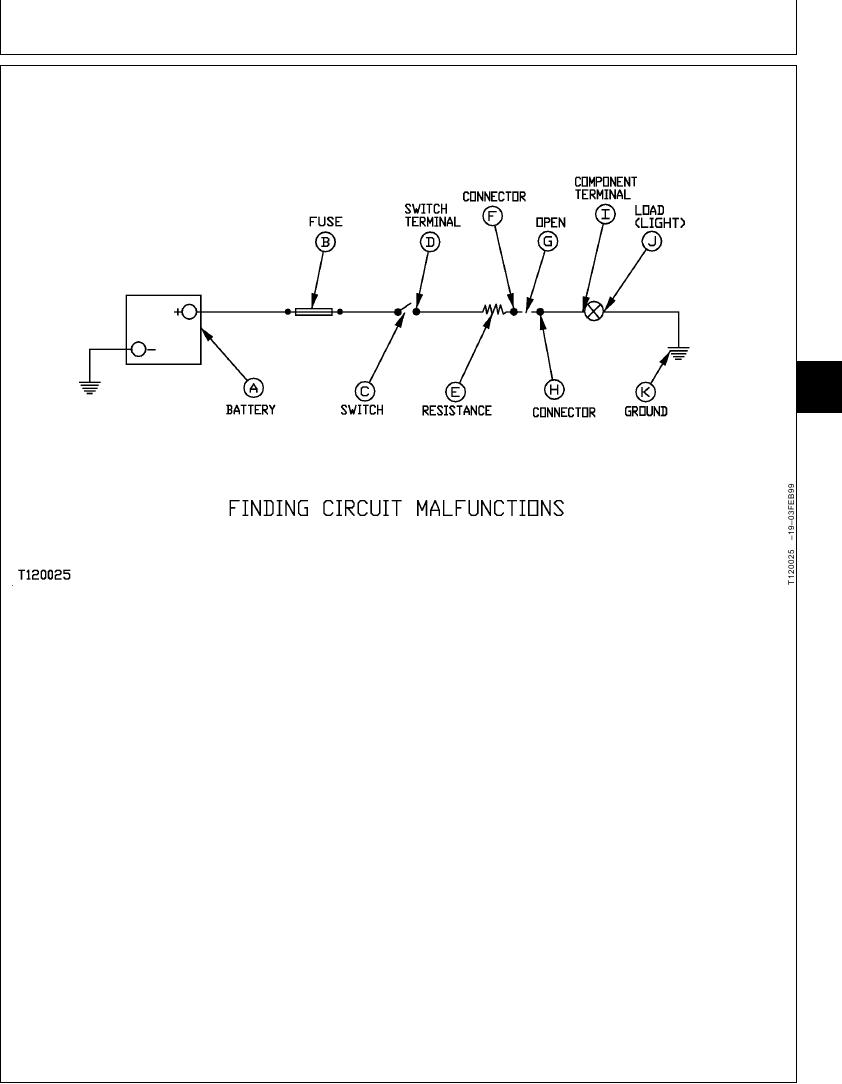
TM 5-3805-281-24-1
System Information
TROUBLESHOOTING CIRCUIT MALFUNCTIONS
9015
05
9
A--Battery
D--Switch Terminal
G--Open
J--Load (Light)
B--Fuse
E--Resistance
H--Connector
K--Ground
C--Switch
F--Connector
I--Component Terminal
5. If voltage is normal, the malfunction is between
High-Resistance Circuit:
point of measurement and circuit ground. Continue
measuring voltage toward circuit ground until low
1. A high resistance circuit results in slow, dim or no
voltage is found. Malfunction is between last two
component operation. High resistance can be
points of measurement.
caused by loose, corroded or oily connector
terminals.
Open Circuit:
2. High resistance can be caused by wire that is too
small or has broken strands internally.
1. An open circuit results in no component operation.
3. Troubleshoot a high resistance circuit by measuring
An open circuit can be caused broken wires,
voltage between the switch and load with the switch
disconnected connector, blown fuse or tripped
ON.
circuit breaker.
4. If voltage is low, the malfunction is between the
2. Troubleshoot an open circuit by replacing the fuse
point of measurement and the battery. Continue
or resetting the circuit breaker, then measure
measuring voltage toward battery until normal
voltage between the switch and load with the switch
voltage is found. Malfunction is between last two
ON.
points of measurement.
Continued on next page
CED,TX13067,2 1903FEB991/6

